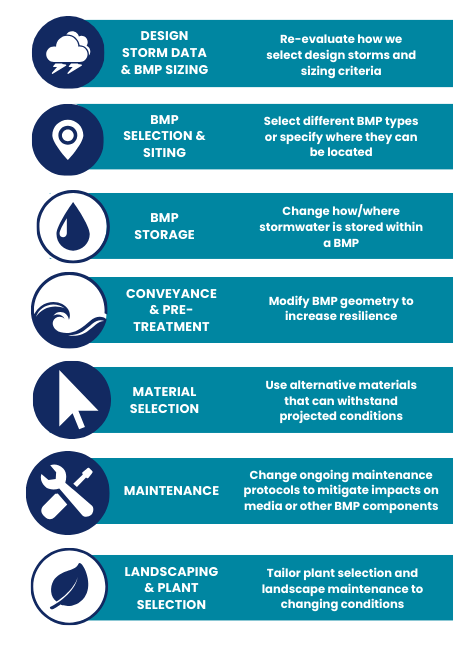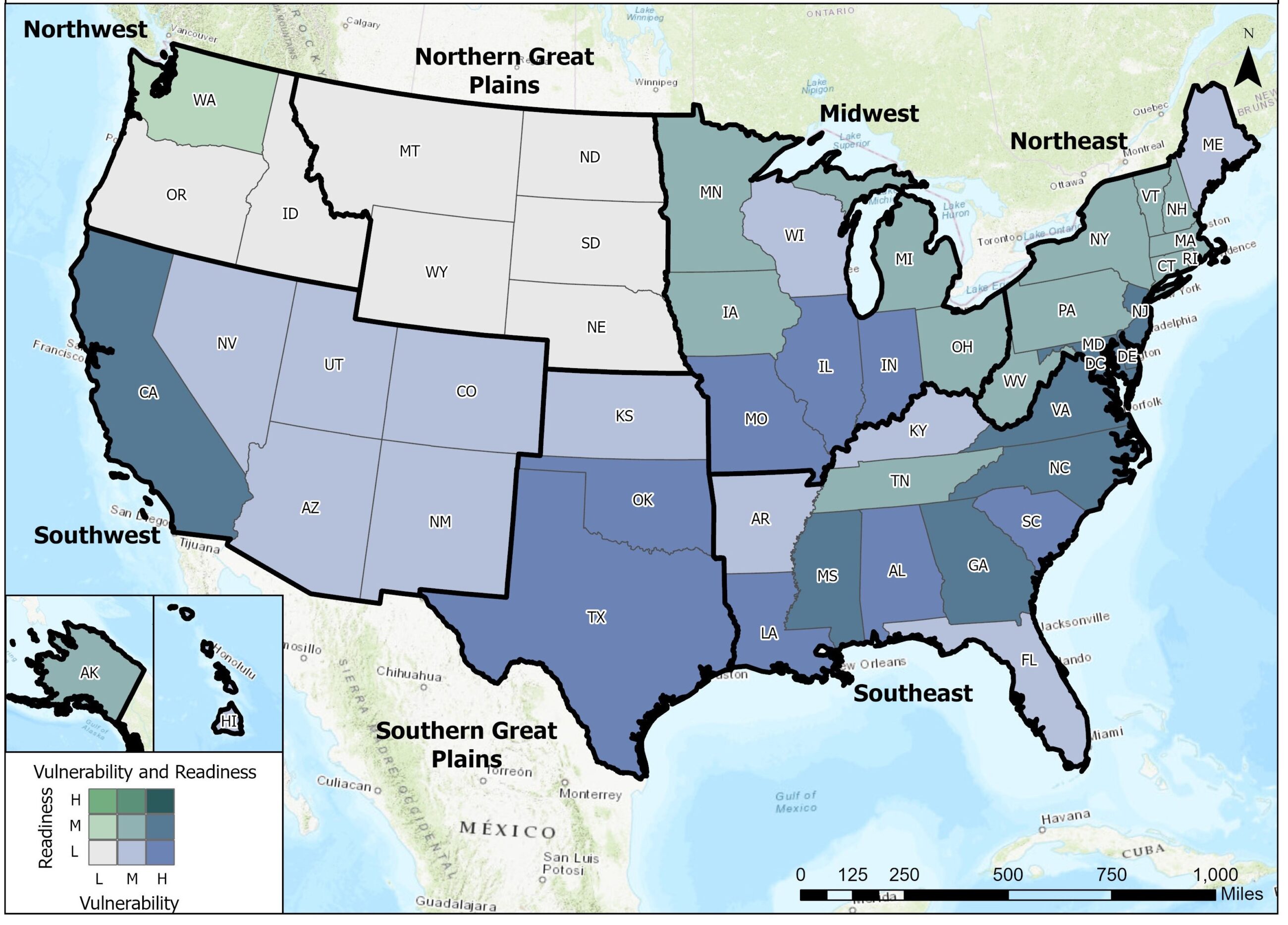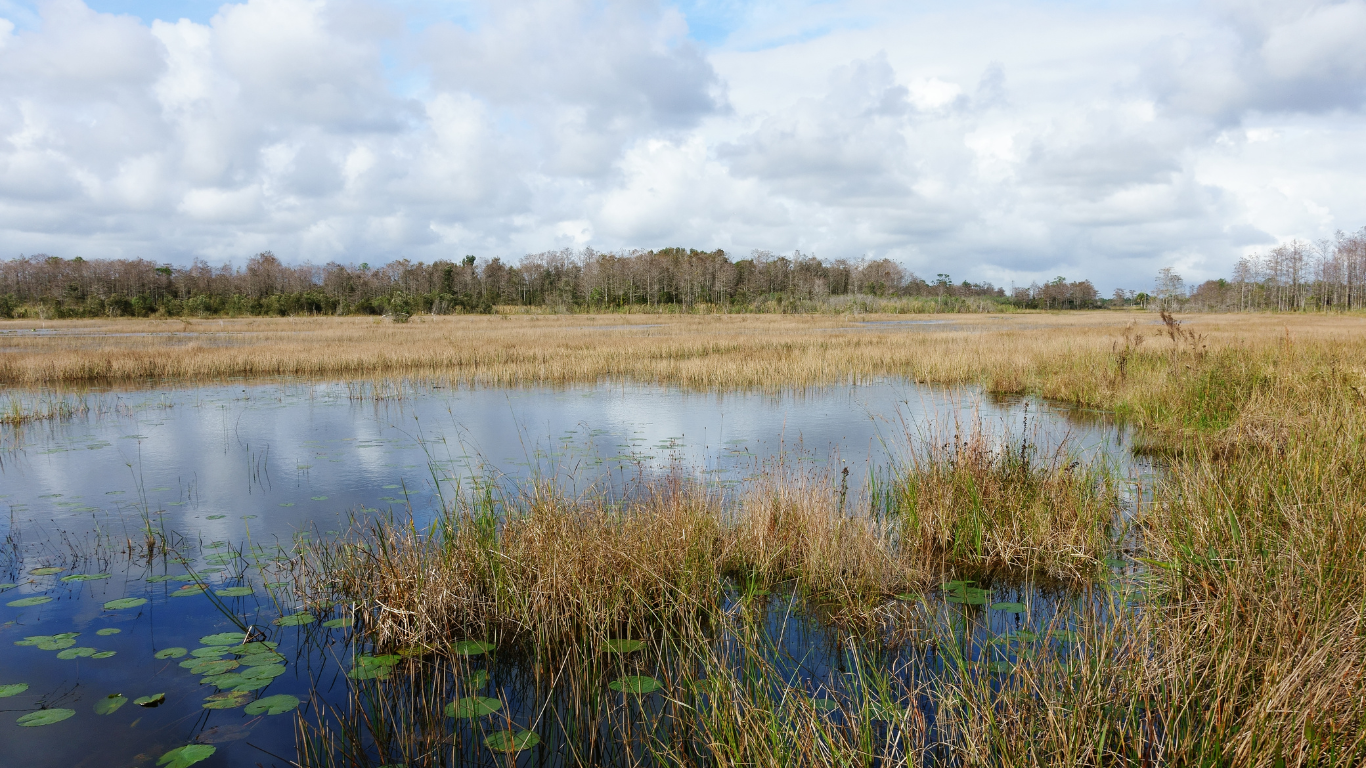Stormwater management systems have historically been designed based on the assumption that climate is stable. The unprecedented rate of change in global climate patterns therefore has important implications for stormwater managers; yet, incorporating climate information into stormwater management has been a challenge for many communities. This study’s objective was to review the existing state post-construction stormwater standards to provide a clearer understanding of the current stormwater management approaches to climate resiliency.
To achieve this objective, CWP first reviewed the technical literature to identify: 1) vulnerabilities posed by climate change to effective stormwater management and 2) best stormwater design practices to manage these vulnerabilities (Figure 1). Next, CWP evaluated state-published stormwater standards with respect to each state’s specific vulnerabilities and the degree to which stormwater-related climate adaptations have been incorporated into standards. The questionnaire also evaluated the extent to which the standards are up–to–date and based on the best available science and practices.

Figure 1. Typology of Stormwater Design Adaptations to Climate Change
Next, CWP categorized each state based on its overall vulnerability to stormwater-related climate impacts, accounting for the extent to which major climate impacts are expected in each U.S. region and the projected increase in developed land over the next 25 years. CWP used the scores from the state stormwater standards review to characterize the overall readiness of each state to adapt their standards to the expected climate impacts. Finally, CWP compared state vulnerabilities to readiness (Figure 2) and identified recommendations for states to close the gaps.


